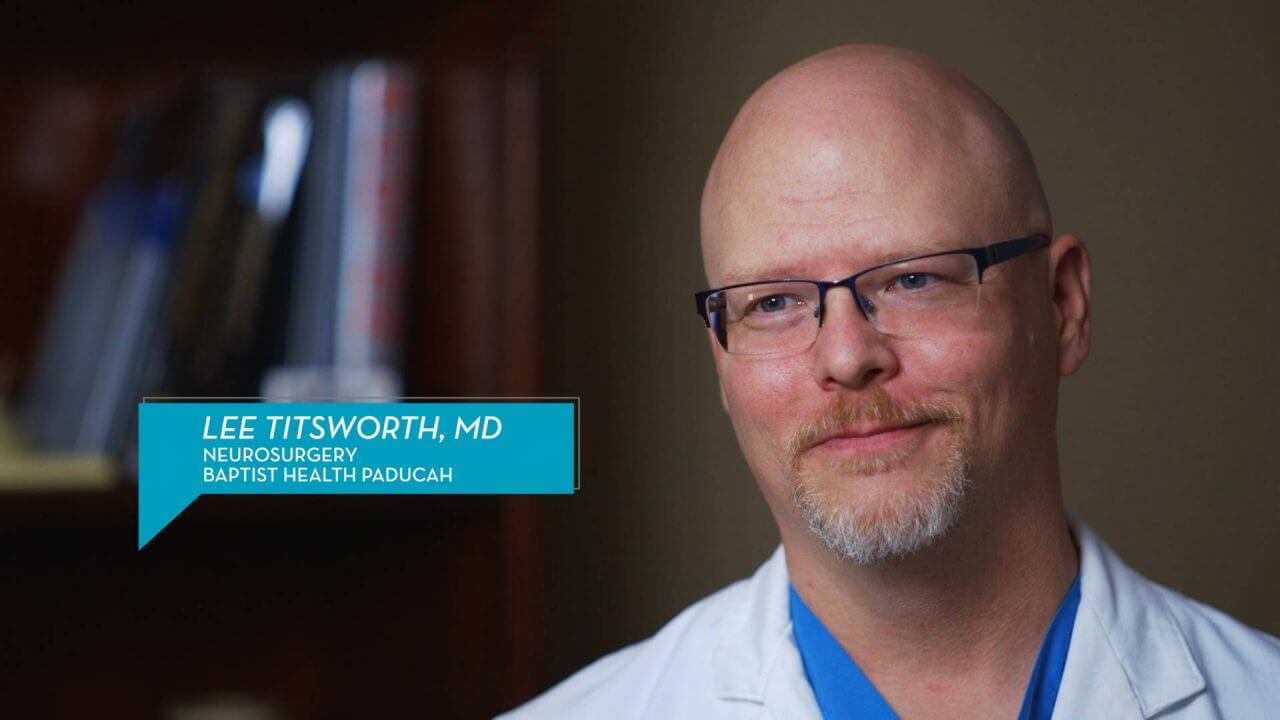A Guide to Headaches

We’ve all been there: An invisible vise squeezes your temples; a phantom nail seems to drive through your brain. Pain relievers can’t work fast enough.
It’s a headache, one of the few ailments every human will suffer at some point.
People usually learn to live with headaches, which is OK because most are no big deal, says Joseph Ashburn, MD, a neurologist with Baptist Health Medical Group in Paducah. He tells his patients to use whatever over-the-counter pain reliever works best for them.
But when headaches disrupt your life, keep you from attending your child’s school functions or make you miss work, see a doctor, he says.
“We can treat these things now. We’ve never had so many medicines and tools for headaches.”
Dr. Ashburn helps us understand some types of headaches.
Migraines are caused by a chemical that might originate in the adrenal glands. Although the severity and symptoms vary widely, they often cause sensitivity to light and sound.
This type of headache has myriad triggers. “For some people, perfumes can trigger it. For other people, seasonal changes can trigger it,” Dr. Ashburn says.
Controlling triggers will stop the headaches for some people. One of Dr. Ashburn’s patients ended her severe migraines after keeping a food journal that revealed her headaches occurred after she ate peanuts. Other people rely on medication.
Rebound headaches occur when a patient uses over-the-counter medications frequently to manage headache pain.
“Your brain starts to build a tolerance, and it starts causing headaches to get the medicine,” Dr. Ashburn says. “It’s a kind of addiction. People with this type of headache kind of go through withdrawal every day.”
The fix? You guessed it; the person must wean off the medication entirely. Later, it may be possible for them to use medication in moderation, but not daily, Dr. Ashburn says.
Cluster headaches, which are uncommon, cause the most severe pain. “When you talk to these people, it’s a 10 out of 10 on the pain scale,” Dr. Ashburn says. “They will do anything to stop it.”
In a cluster headache, the pain is usually concentrated behind an eyeball. The sufferer’s eye will redden and water, and her nose may run.
Cluster headaches come on instantly and can last seconds, minutes, or an hour before ending, Dr. Ashburn says, but they can return a second or an hour later. Those who suffer cluster headaches can have hundreds before the cycle ends. The cycles might be spaced years apart.
Unfortunately, these headaches often have to run their course; there’s no cure for cluster headaches. However, some prescription medications and oxygen therapy may relieve pain.
Sinus headaches cause a dull sensation over your eyes or under your eyes where the sinuses are, Dr. Ashburn says. They aren’t common and they’re not debilitating; they also tend to be seasonal. Many people mistake migraines for sinus headaches, he says, because they too cause pressure on the face and forehead. Over-the-counter medication is usually enough to ease sinus pressure.
Tension headaches, resulting from stress, are not as severe as other types.
People with tension headaches might say they feel like they have a band tight around their heads. Over-the-counter medications and stress relief measures should take care of them.
Temporal arteritis is one of the few dangerous headaches, Dr. Ashburn says. A vessel on the side of your head near your temple becomes inflamed, causing a throbbing sensation in the temples. If untreated, the artery can shut off blood to the eye, leading to blindness. Steroids will reduce inflammation.
Pseudotumor cerebri occurs mainly in young women who are overweight. Fluid around the brain causes sufferers to experience a headache all day. If untreated, this type of headache will also cause blindness because of the pressure on the optic nerve. Medication and weight loss can help. In some situations, a shunt is inserted to drain fluid from the brain to the stomach.
An aneurysm is the most dangerous headache, caused when a weak wall of a blood vessel balloons out. People who experience this life-threatening pain will say it is the worst headache of their life. If the aneurysm ruptures, it can release blood into the skull and cause a stroke. This rare condition requires immediate medical attention.
So when should you worry? If a headache causes any sort of neurological symptoms, such as confusion, weakness, or a droop in facial features, seek immediate medical attention, Dr. Ashburn says. It’s also wise to see a doctor whenever you experience a headache that’s out of the norm for what’s typical for you, such as agonizing, sharp pain when you normally experience mild, dull headaches.
Have a health question? Call the Baptist Health Line at 270.575.2918. The free hotline is the area’s only call center staffed by registered nurses and answered 24 hours a day.



